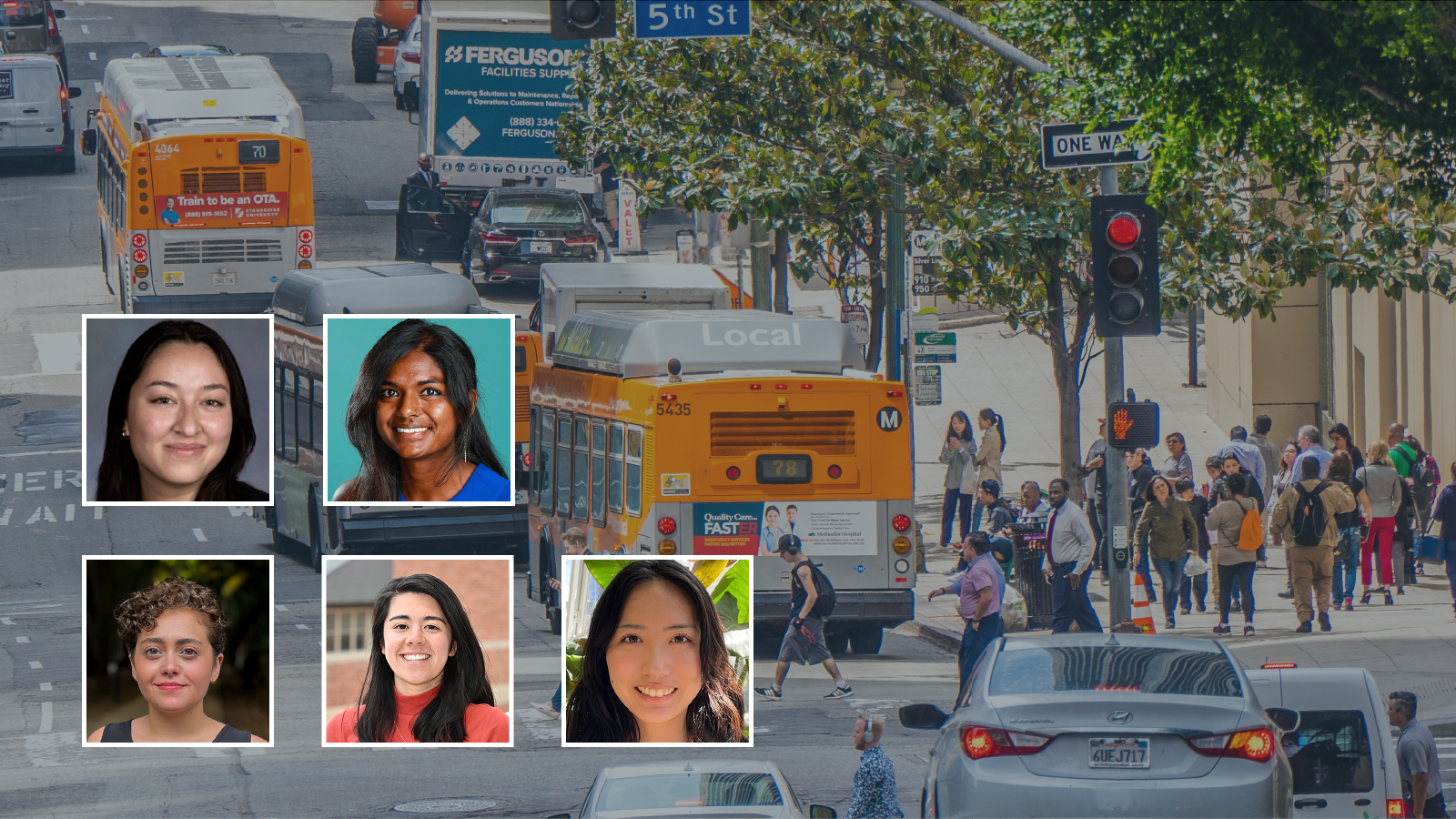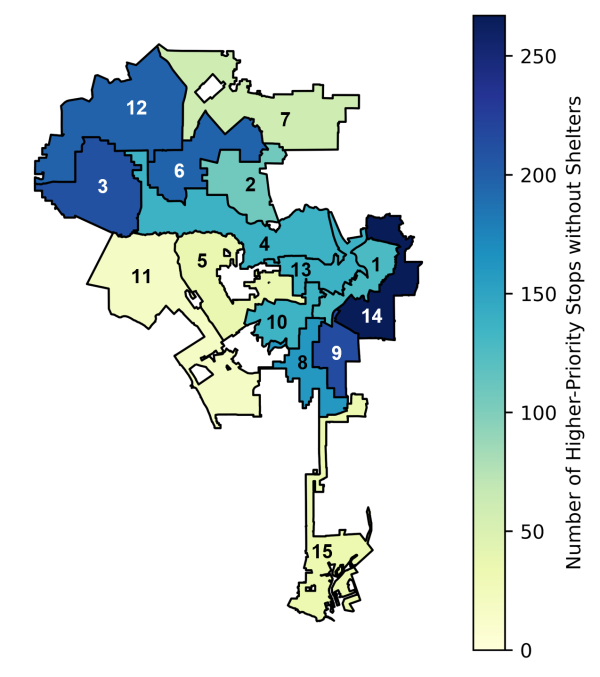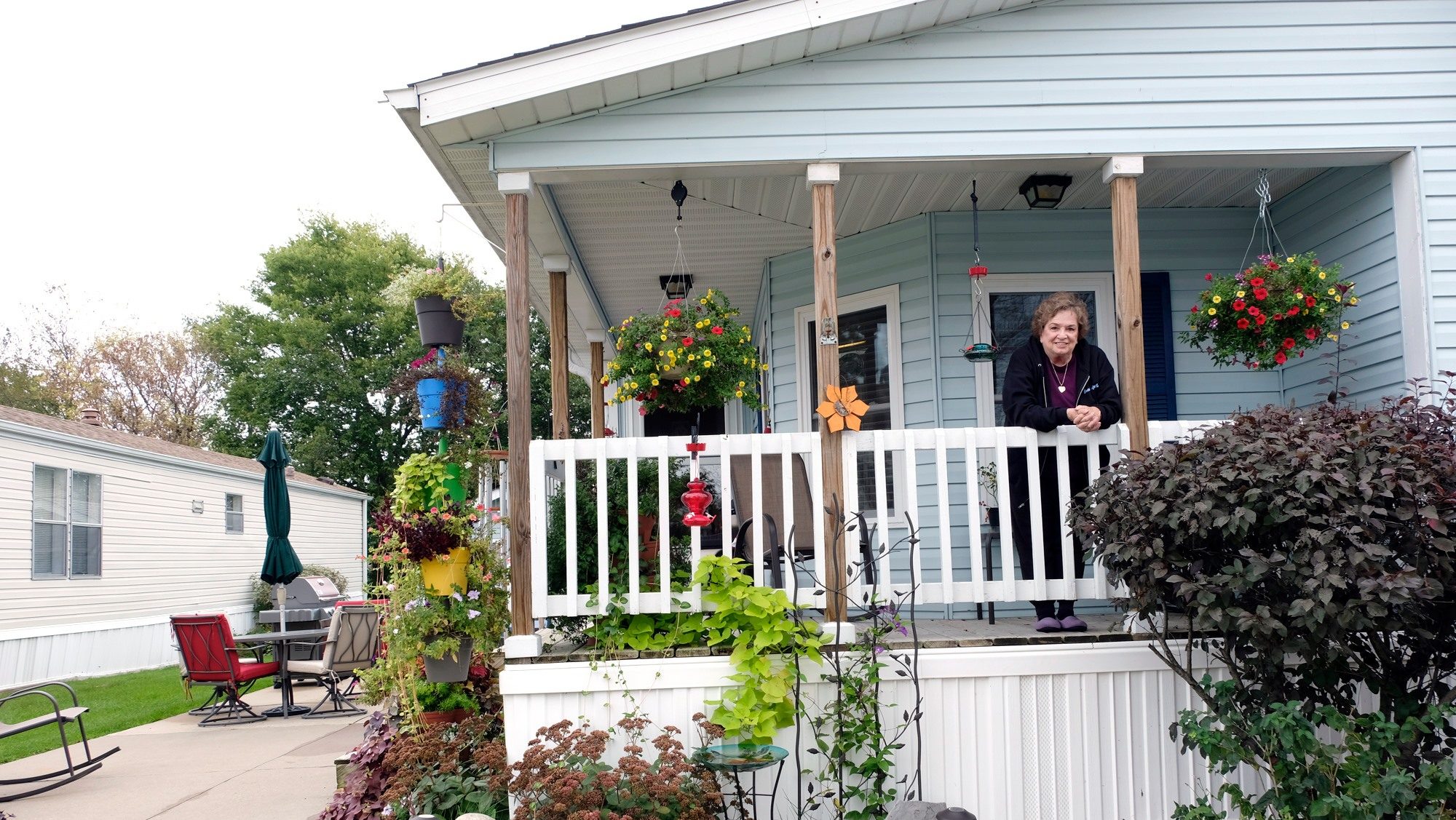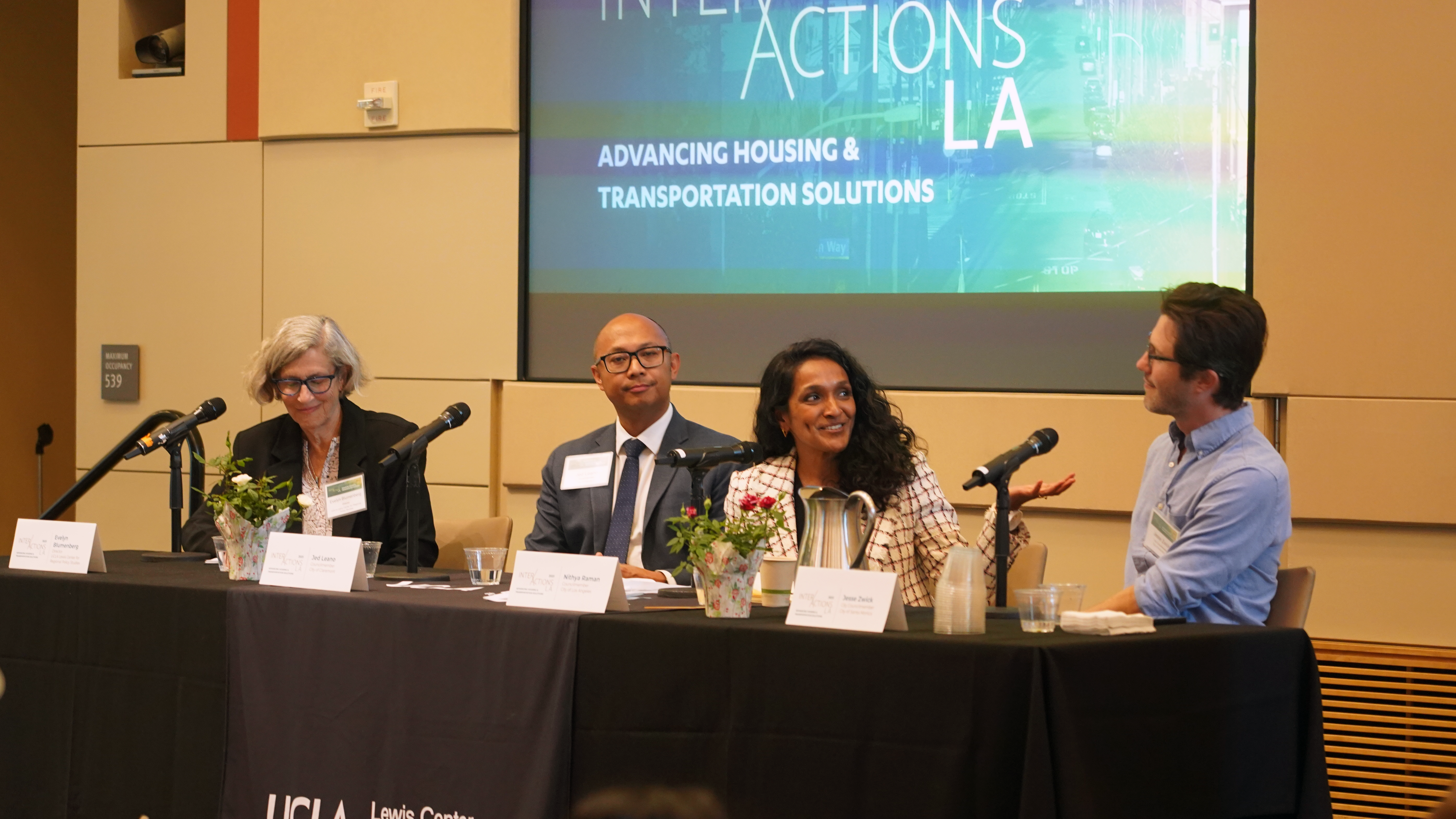
What keeps Los Angeles moving? Lewis Fellows tackle transportation challenges
This year, the Lewis Center supported 15 student fellows as they tackled pressing issues on the quality of life for residents in the Los Angeles region, with a focus on housing affordability and transportation access and equity.
With 469 square miles and nearly 10 million residents, Los Angeles is known for its traffic congestion and its multimodal transportation landscape, making it an ideal setting for transportation research. UCLA’s Urban Planning graduate students who specialize in transportation policy and planning not only explore transportation and land use, but they seek to understand the historical, spatial, economic, social and environmental factors that affect how people move around the city and the world.
Five of this year’s student fellows partnered with clients from local transit agencies, community groups and private firms to examine the region’s current transportation issues. They interviewed Los Angeles residents and examined data about public transit infrastructure and roadways in Los Angeles, and their capstone projects identified barriers and pathways to improving public safety, sustainability, equity and access to a wide array of transportation options.
Life After Pilot Programs
Because California often leads the country when it comes to transportation policy, it makes sense that many transportation-related programs and emerging technologies get tested in the state. Los Angeles residents have seen a variety of new traffic-calming measures come and go. They were also among the first to see food-delivery robots and driverless cars piloted on city streets. Josephine Dine MURP ‘24 wanted to understand what happens after the pilot phase, and what it takes to turn successful pilots into permanent programs. Dine analyzed seven pilot programs across the country that spanned transit fare programs to highway toll lanes. She worked with the Southern California Association of Governments to develop protocols for when a transportation pilot program ends.
Dine said she hopes that “agencies start to recognize the usefulness of transportation pilots and maybe start to use them more intentionally as an initial step towards their large-scale goals.”

Waiting for the Bus in Los Angeles
As California faces another record-breaking summer heatwave, bus commuters in Los Angeles strive to beat the heat and stay safe while waiting at bus stops. When Monisha Reginald MURP ‘24 examined bus stop data to see whether or not they provide both shade and light, she observed that most bus stop data was collected up to a decade ago. “I really do believe that data-informed planning has the potential to increase equity, accountability, and transparency, but we have to invest in data collection that accurately reflects people’s experiences for any of that to be realized,” she said. Reginald’s research also revealed spatial inequalities, as most bus stops in the hottest neighborhoods provided neither shade nor shelter. Her research also shows that restrictive residential zoning and narrow sidewalks pose challenges, but this underscores the need for zoning easements and innovative new designs for shade and light structures so that bus riders get the shelter and light they need.

The Effects of Extreme Commutes
While commute times in Los Angeles are notoriously long, the high cost of housing continues to push people further away from the city’s job centers. Alejandra Rios Gutierrez MURP ‘24 worked with Pacoima Beautiful to understand the effects of extreme commutes, defined as traveling more than 180 minutes per day. Rios focused her research on the San Fernando Valley, which is divided by many of Los Angeles’ most infamously congested freeways, including the 405, which has few public transit alternatives. Her research highlights the impacts that long commutes have on physical, financial and mental health as well as the cumulative impact on the social fabric of communities. Her capstone project underscores how quality of life should factor into transportation policy decisions. “I hope this research contributes to current discourse on mobility justice in the context of extreme commuters, prompting planners to prioritize dignity and care in the development of transportation systems, housing policy, and economic development plans,” she said at the start of her project.
Checking in on L.A.’s Sustainable Transit Plan
Los Angeles County is more than halfway through its 15-year plan to shift residents away from car dependency and toward more sustainable modes, like public transit, bicycling, and walking. Adria Stauber MURP ‘24 checked in on the progress of this 2016 plan to see if adding rail stations increased transit usage in surrounding communities. She found that rents and home prices have increased throughout Los Angeles, which have pushed many commuters to live farther from their workplaces, while others have shifted to remote work. However, these changes can be traced back to the COVID-19 pandemic and may be unrelated to the presence of rail stations. Stauber’s work highlights the importance of the relationship between housing affordability and transit mode choice, and she suggests that cities should explore innovative local hire policies and anti-displacement measures when planning transit-oriented developments.
Life Beyond Cars
While many people assume that everyone drives in Los Angeles, car ownership is not the default. Alyssa Suzukawa MURP 2024 investigated transportation access and the travel patterns of people who live car-free in Los Angeles. Suzukawa found that many carless or car-deficit residents ride public transit and tend to be concentrated in predominantly low-income communities that would qualify them for transit subsidies, yet there were low rates of participation in these programs in the neighborhoods she studied. She suggests that public agencies should increase their outreach to build awareness and participation in programs like Metro LIFE fare discount program and BlueLA, a carsharing program with subsidized rates for low-income residents. Her work also provided her client, the Los Angeles Department of Transportation, recommendations about how to improve safety and nighttime visibility along sidewalks and near transit hubs.
The Lewis Center seeks to bring scholarship and world-class research to the forefront in order to help guide policymakers as they address society’s changing needs for transportation and movement around the globe.
For a full list of projects undertaken by this year’s fellows, visit lewis.ucla.edu/programs/studentresearch.



